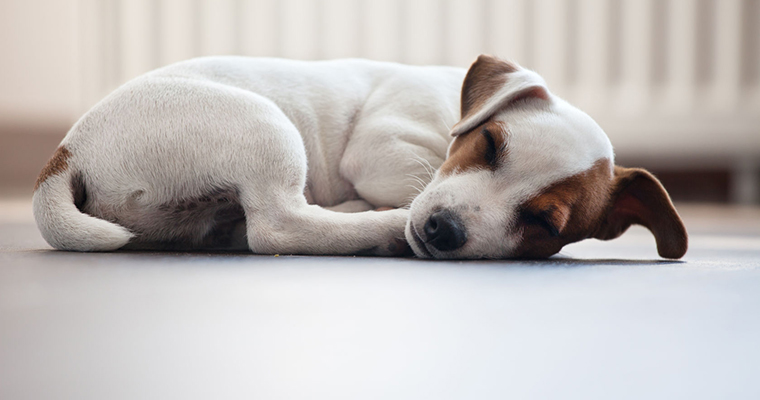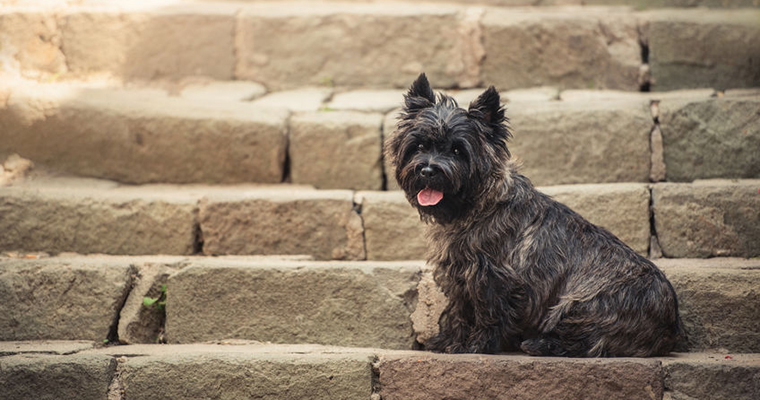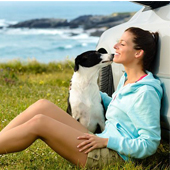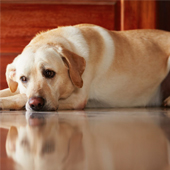What do our beloved pups get up to whilst we’re away from home? For some of us, that’s a thought quite hard to bear!
Leaving your four-legged friend to go to work, pick up the kids or simply pop to the shops can be quite an ordeal for some dogs. They simply can’t handle being away from us, rescue dogs in particular. So what can be done to ensure they don’t howl the house down as soon as you close the door behind you?
What some may view as troublesome behaviour, is actually separation anxiety and can be a sign of mental despair. This may sound dramatic, but there’s plenty we can do to offer dogs some independence and stop them from relying on our presence.

Start with stair gates
Best known as baby gates, a small barrier between you and your dog can help them get used to a little distance. They’ll still be able to smell and sense your presence, but they won’t be able to reach you. Whilst they may find it difficult at first, you’ll notice them lose interest and live a little more independently. This doesn’t mean you won’t have cuddles on demand! It simply means that when the time comes, they’ll be used to having their own space.
Start small and entertain your dog with a chew toy or kong whilst you’re away behind the gate. Come back to them whilst they’re still enjoying their treat and don’t make a fuss of them. This will reinforce the idea that being alone is no big deal.
Watch out for simulated anxiety
Does your dog pull on your heartstrings every time you leave? They might have learned this behaviour to get a little extra attention. Whilst these cheeky pups may make you melt with the smallest whimper, there comes a time where you have to be stern and correct this behaviour.
- Barking and howling
- Chewing furnishings
- Digging
- Escaping
- Soiling indoors
Signs of genuine separation anxiety:

How to prepare your home
Make sure you complete the training above before assuming your dog won’t tear up the house without you. Some people like to leave their TV on or hide treats around the home, but this often isn’t enough if you haven’t addressed the behavioural issues up front beforehand.
You’re going to look at obvious crutches that even the most prepared dogs would turn to. Might they pace and knock over precariously placed ornament? Or perhaps they’re need a soft mound of cushions to curl up in and get comfy?
Assess the environment around them to make sure you’re leaving them in good conditions.
Could your dog go outside?
It would be brilliant if all dogs could be trusted to go for a stroll and come back home like cats, but unfortunately they aren’t that way inclined. They’d no doubt end up over the fence and far away, chasing birds and cats for hours on end.
However, if it’s hot in the house, it can be tempting to crack open a window or let them roam freely. Of course you can’t risk a security breach, so what’s the solution? Dog pens or outdoor crates could be the answer in certain climates. Much like a large rabbit hutch, they create a safe outdoor space for your dog to relax in the sun if it’s too hot to leave them inside.
If the weather is too unpredictable for your dog to be outside all day, a ‘dog door’ similar to a cat flap could lead straight into a pen that they could visit to cool down. You’d of course need garden space for this, but it does provide a great alternative for larger dogs in particular, who need more room to stretch.

The golden rule
Depending on what type of allergies your pet is experiencing, there are basic measures you can take to minimize discomfort and encourage faster healing.
Do not fuss your pet after leaving them. This goes for during training and afterwards. Giving them treats when you come home or being overly excited when you come back will only make them pine for you more once you’re gone. It reinforces the fact that they’ve been waiting all day for you to come home, when the aim of this is to give them a sense of independence.
It can take time and you’re bound to want to work from home forever, but it’s better for the both of you to have a little time apart. Like a bad breakup, separation anxiety will inevitably ease when you take the right mistakes to move on. Whilst you’re gone for 10 minutes, you’re not gone forever and you can return home to a perfectly tidy house and a dog that loves you just as much.





